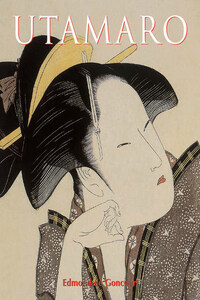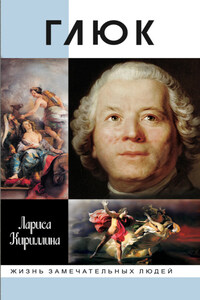Snow, Moon and Flowers from the Ōgiya Tea House (Setsugekka Hanaōgi), Kansei period (1789–1801).
Ōban, nishiki-e, 36.2 × 24.9 cm.
Musée national des Arts asiatiques – Guimet, Paris.
Woman Making up her Lips (Kuchibiru), c. 1795–1796.
Ōban, nishiki-e, 36.9 × 25.4 cm. Private Collection, Japan.
To leaf through albums of Japanese prints is truly to experience a new awakening, during which one is struck in particular by the splendour of Utamaro. His sumptuous plates seize the imagination through his love of women, whom he wraps so voluptuously in grand Japanese fabrics, in folds, contours, cascades and colours so finely chosen that the heart grows faint looking at them, imagining what exquisite thrills they represented for the artist. For women’s clothing reveals a nation’s concept of love, and this love itself is but a form of lofty thought crystallised around a source of joy. Utamaro, the painter of Japanese love, would moreover die from this love; for one must not forget that love for the Japanese is above all erotic. The shungas* of this great artist illustrate how interested he was in this subject. His delectable images of women fill hundreds of books and albums and are reminders, if any were needed, of the countless affinities between art and eroticism. Thus Utamaro’s teacher, the painter Toriyama Sekien, could say of the magnificent Picture Book: Selected Insects (Illustrations 1, 2, 3, 4): “Here are the first works done from the heart.” The heart of Utamaro shines forth in the quest for the beauty of animals through this effusion with which he depicts the women of the Yoshiwara*: the love of beauty in an artist is not real unless he has the sensuality for it. Love and sex are at the foundation of aesthetic feelings and become the best way to exteriorise art which, in truth, never renders life better than by schematisation, by stylisation.
Among the artists of the Japanese movement of the “floating world” (Ukiyo), Utamaro is one of the best known in Europe; he has remained the painter of the “green houses”, as he was called by Edmond de Goncourt. We associate him at once with the colour prints (nishiki-e*) of his great willowy black-haired courtesans dressed in precious fabrics, a virtuoso performance by the printmaker.
In addition to romantic scenes set in nature, he dealt with themes such as famous lovers together, portraits of courtesans or erotic visions of the Yoshiwara*. But it is Utamaro’s portrayals of women which are the most striking by their sensual beauty, at once lively and charming, so far removed from realism, and imbued with a highly-refined psychological sense. He offered a new ideal of femininity; thin, aloof, and with reserved manners. He has been criticised for having popularised the fashion of the long silhouette in women and giving these figures unrealistic proportions. He was, to be sure, one of the prominent representatives of this style, but his portraits of women, with their distorted proportions, remain works of an art which is marvellous and eminently Japanese. In truth, the Japanese value nobility in great beauty more highly than observation and cleverness. Subtly, the evocative approach brings beauty to full flower, offers its thousand facets to the eye, astonishes by a complexity of attitudes which are more apparent than real and takes absurd liberties with the truth, liberties which are nonetheless full of meaning.








